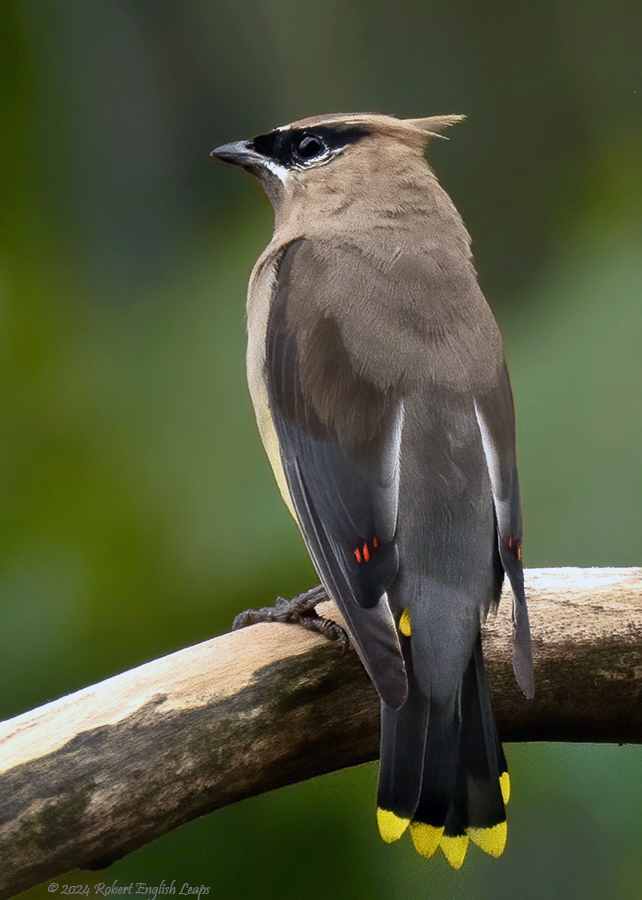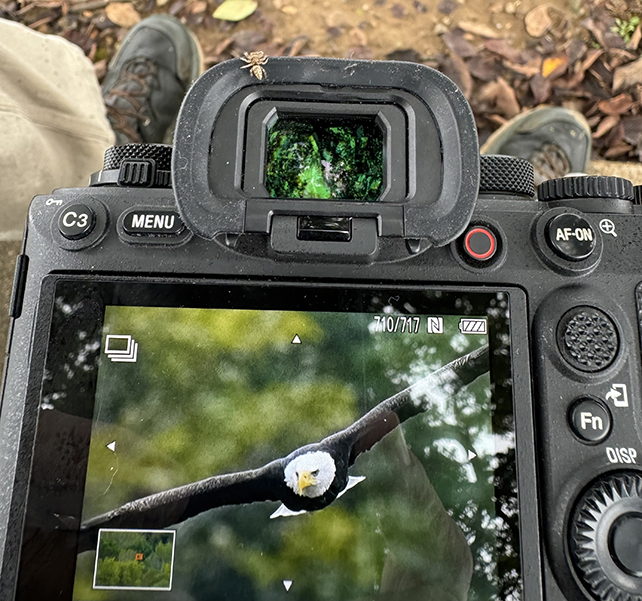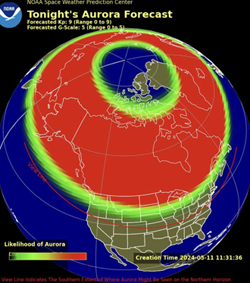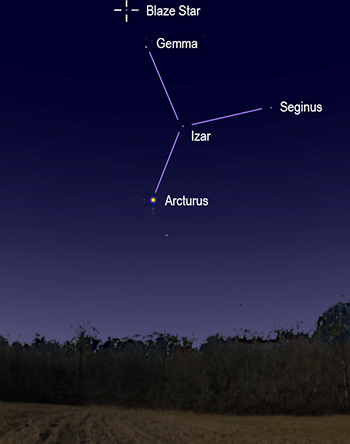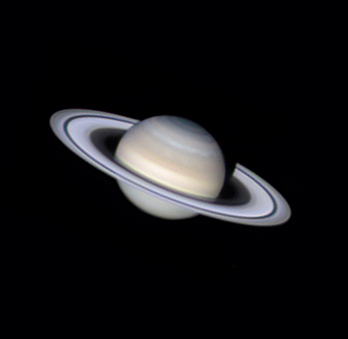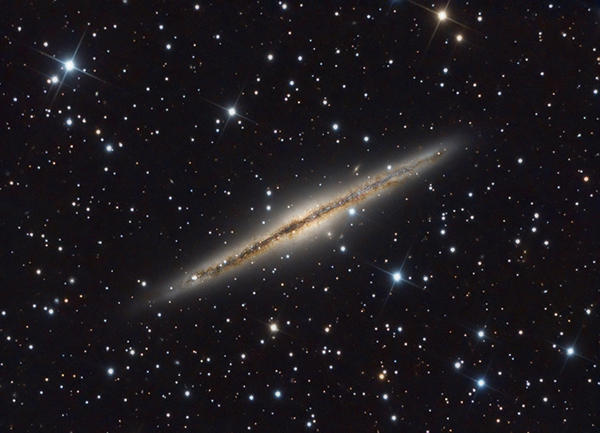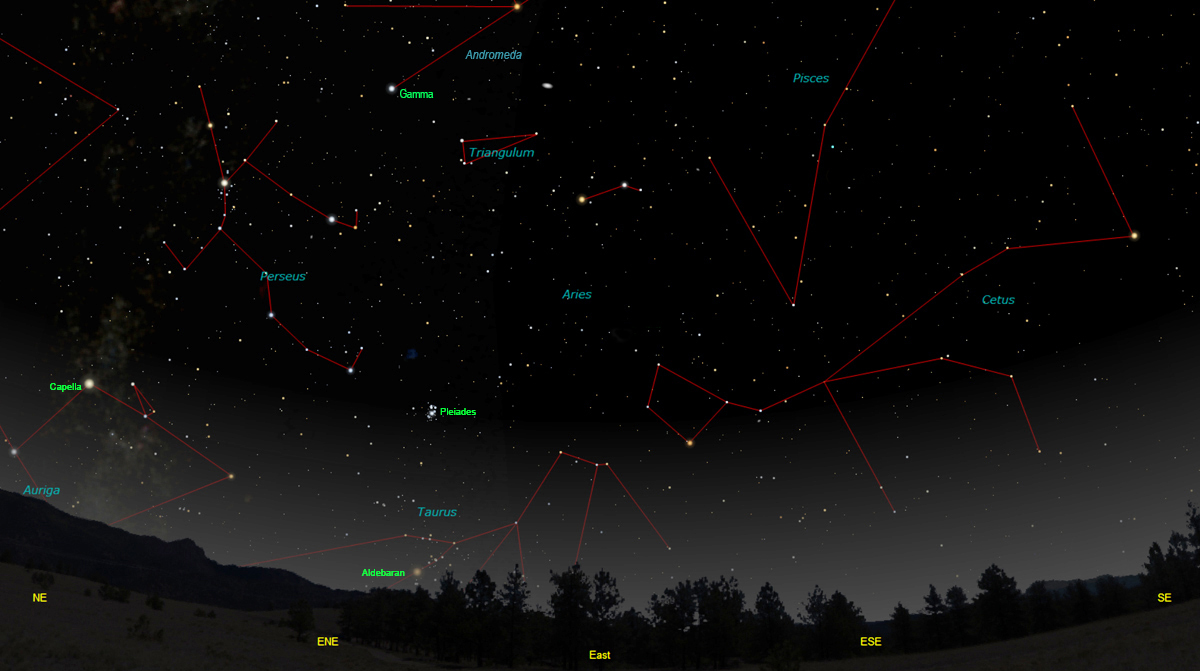The purpose of this feature is to give scout leaders, educators and naturalists an idea of some of the natural events coming up each month. We will try to cover a variety of natural events ranging from sky events to calling periods of amphibians, bird and mammal watching tips, prominent wildflowers and anything else that comes to mind. We will also note prominent constellations appearing over the eastern horizon at mid-evening each month for our area for those who would like to learn the constellations. If you have suggestions for other types of natural information you would like to see added to this calendar, let us know! Though we link book references to nationwide sources, we encourage you to support your local book store whenever possible.
Sky Events for October 2024:
We recommend checking the NASA Space Weather Prediction Center forecast every few days for upcoming auroral displays. Some sources on the internet tend to exaggerate the visibility of these displays, at least at our latitude. To really tell if you have a chance to see them in Tennessee, compare what the NASA Space Weather Prediction Center shows with the image at right. It shows the predicted display for the aurora on May 11th, during the great magnetic storm beginning on May 10th. Comet Tsuchinshan-ATLAS has brightened to magnitude 2.8 and was photographed by many with telephoto lenses in the last few days of September. Each day that passes will make it more difficult to see as it appears closer and closer to the rising Sun. But you may still be able to catch a glimpse the first day or two of October. Look a little south of due east. Scanning with binoculars will increase your chances of picking it up - just stop scanning after sunrise to protect your eyes. A better chance to view it may be starting October 12th in the evening sky, when you will be looking after sunset due west. It will appear a little higher above the horizon each day at the same time after that. On the 12th, locate bright Venus first and the head of the comet will appear due west at about the same height above the horizon as Venus.
For a more in-depth discussion and star chart look here. For a quick way to "discover" the eruption on your own, you can look at the pattern of the brighter stars in the constellations of Bootes and Corona Borealis. In the image at right notice there is a distinct pattern that is formed by the very bright orange star Arcturus and the three fairly bright stars above it. Arcturus, Izar, Seginus and Gemma form a bright pattern in the shape of a capital "Y". Simply look due west as the skies darken in early September and you should easily be able to pick out bright orange Arcturus, which will be about 30 degrees above the horizon. It is the brightest star in that part of the sky. Next look for the moderately bright stars Izar, Seginus and Gemma. These stars form a pattern in the shape of a capital "Y". If you extend the upper left-hand part of the "Y" about half the distance between Izar and Gemma, you will be at the spot where the blaze star should appear when it erupts. Each segment of the "Y" will be about the width of the fingers of your hand (minus the thumb) held at arm's length. Just get in the habit of checking the "Y" pattern each clear night. If one evening you see a "new" star in the position shown, you'll be among the first to see the star brighten. Since this star is about 2,700 light-years distant, you will be seeing an event that actually occurred 2,700 years ago!
Evening
Sky:
Venus is low in the west after sunset. If you have a flat western horizon, look for it with binoculars about 15 minutes after sunset low in the West-Northwest. It is bright but it is very close to the horizon. You can use Venus to help you locate Comet Tsuchinshan-ATLAS on October 2nd as explained above. Jupiter rises about 4 hours after sunset at the beginning of the month in Taurus. Mars is in Gemini and rises about 5-1/2 hours after sunset. Mars is growing brighter and appearing larger telescopically. It starts the month 7.5 seconds of an arc in apparent diameter and grows to 9.1 seconds of an arc by the end of the month. You will be probably be able to pick out some details on Mars if you are patient and have good seeing conditions. The orange-red color of Mars will be more obvious as the month goes on. It will continue appearing larger as Earth and Mars approach each other for January, 2025 opposition.
Constellations::
The views below show the sky looking east at 9:15pm CDT on October 8th. The first view shows the sky with the constellations outlined and labeled. Star and planet names are in green. Constellation names are in blue. The second view shows the same scene without labels. Prominent constellations include Triangulum, the Triangle, Aries, the Ram, and Cetus, the Sea Monster. Auriga, the Charioteer, with its bright star Capella, and Taurus, the Bull, are rising in the northeast. The bright star Aldebaran, a red giant representing the eye of the bull, should just be rising.Above Aldebaran, look for the Pleiades, a beautiful open star cluster. Also called the "Seven Sisters," it has been known since antiquity. In Japan it is known as Subaru, and the Subaru automobile is named for this cluster. Before the Gregorian calendar reform in 1582, the Pleiades culminated around midnight on October 31st, and it has been traditionally associated with Halloween.Clear moonless fall nights are a great time to hunt down deep sky objects. If you have a four-inch aperture telescope or more, you might try hunting down the edge-on galaxy NGC891 in Andromeda, shown in the image above right. To find its location, just center your telescope on Gamma Andromeda (shown in the star chart below, cut the tracking off on your telescope and wait 18 minutes and 41 seconds. Then turn your tracking back on. The Earth will have turned to point you at the galaxy. But being in the right location and actually seeing it are two very different things. The larger aperture telescope you have, the better. It is a true Halloween ghost, and you will probably need very dark skies and some patience to pick out the very faint thin line of the galaxy. An image of this galaxy was one of the images used in the1960's sci-fi television show, The Outer Limits.
On Learning the Constellations: We advise learning a few constellations each month, and then following them through the seasons. Once you associate a particular constellation coming over the eastern horizon at a certain time of year, you may start thinking about it like an old friend, looking forward to its arrival each season. The stars in the evening scene above, for instance, will always be in the same place relative to the horizon at the same time and date each October. Of course, the planets do move slowly through the constellations, but with practice you will learn to identify them from their appearance. In particular, learn the brightest stars for they will guide you to the fainter stars. Once you can locate the more prominent constellations, you can "branch out" to other constellations around them. It may take you a little while to get a sense of scale, to translate what you see on the computer screen or what you see on the page of a book to what you see in the sky. Look for patterns, like the stars that make up the constellation of Perseus. The earth's rotation causes the constellations to appear to move across the sky just as the Sun and the Moon appear to do. If you go outside earlier than the time shown on the charts, the constellations will be lower to the eastern horizon. If you observe later, they will have climbed higher. To observe faint objects, it's always better to wait until they are high in the sky. As each season progresses, the earth's motion around the sun causes the constellations to appear a little farther towards the west each night for any given time of night. The westward motion of the constellations is equivalent to two hours per month. Recommended: Sky & Telescope's Pocket Star Atlas is beautiful, compact star atlas. A good book to learn the constellations is Patterns in the Sky, by Hewitt-White. For sky watching tips, an inexpensive good guide is Secrets of Stargazing, by Becky Ramotowski.
A good general reference book on astronomy is the Peterson
Field Guide,
A Field Guide to the Stars and Planets, by Pasachoff. The book retails for around $14.00.
The Virtual Moon Atlas is a terrific way to learn the surface features of the Moon. And it's free software. You can download the Virtual Moon Atlas here. Apps: The Sky Safari 6 basic version is free and a great aid for the beginning stargazer. We really love the Sky Safari 6 Pro. Both are available for iOS and Android operating systems. There are three versions. The Pro is simply the best astronomy app we've ever seen. The description of the Pro version reads, "includes over 100 million stars, 3 million galaxies down to 18th magnitude, and 750,000 solar system objects; including every comet and asteroid ever discovered." A nother great app is the Photographer's Ephemeris. Great for finding sunrise, moonrise, sunset and moonset times and the precise place on the horizon that the event will occur. Invaluable not only for planning photographs, but also nice to plan an outing to watch the full moon rise. Available for both androids and iOS operating systems.
Amphibians:
Recommended: The Frogs and Toads of North America, Lang Elliott, Houghton Mifflin Co.
Archives (Remember to use the back button on your browser, NOT the back button on the web page!) Natural Calendar September 2024 Natural Calendar February 2024 Natural Calendar December 2023 Natural Calendar November 2023 Natural Calendar September 2023 Natural Calendar February 2023 Natural Calendar September 2022 Natural Calendar February 2022 Natural Calendar December 2021 Natural Calendar November 2021 Natural Calendar September 2021 Natural Calendar February 2021 Natural Calendar December 2020 Natural Calendar November 2020 Natural Calendar September 2020 Natural Calendar February 2020 Natural Calendar December 2019 Natural Calendar November 2019 Natural Calendar September 2019 Natural Calendar February 2019 Natural Calendar December 2018
Natural Calendar September 2018 Natural Calendar February 2018 Natural Calendar December 2017 Natural Calendar November 2017 Natural Calendar October 2017Natural Calendar September 2017 Natural Calendar February 2017 Natural Calendar December 2016 Natural Calendar November 2016 Natural Calendar September 2016Natural Calendar February 2016 Natural Calendar December 2015 Natural Calendar November 2015 Natural Calendar September 2015 Natural Calendar November 2014 Natural Calendar September 2014 Natural Calendar September 2013 Natural Calendar December 2012 Natural Calendar November 2012 Natural Calendar September 2012 Natural Calendar February 2012 Natural Calendar December 2011 Natural Calendar November 2011 Natural Calendar September 2011 Natural Calendar December 2010 Natural Calendar November 2010 Natural Calendar September 2010 Natural Calendar February 2010 Natural Calendar December 2009 Natural Calendar November 2009 Natural Calendar September 2009 Natural Calendar February 2009 Natural Calendar December 2008 Natural Calendar November 2008 Natural Calendar September 2008 Natural Calendar February 2008 Natural Calendar December 2007 Natural Calendar November 2007 Natural Calendar September 2007 Natural Calendar February 2007 Natural Calendar December 2006 Natural Calendar November 2006 Natural Calendar September 2006 Natural Calendar February 2006
Natural Calendar December 2005
Natural Calendar November 2005
Natural Calendar September 2005
Natural Calendar February 2005
Natural Calendar December 2004
Natural Calendar November 2004
Natural Calendar September 2004
Natural Calendar February 2004
Natural Calendar December 2003
Natural Calendar November 2003 Natural Calendar February 2003 Natural Calendar December 2002 Natural Calendar November 2002 Nature Notes Archives: Nature Notes was a page we published in 2001 and 2002 containing our observations about everything from the northern lights display of November 2001 to frog and salamander egg masses. Night scenes prepared with The Sky Professional from Software Bisque All images and recordings © 2024 Leaps
|
|
|
